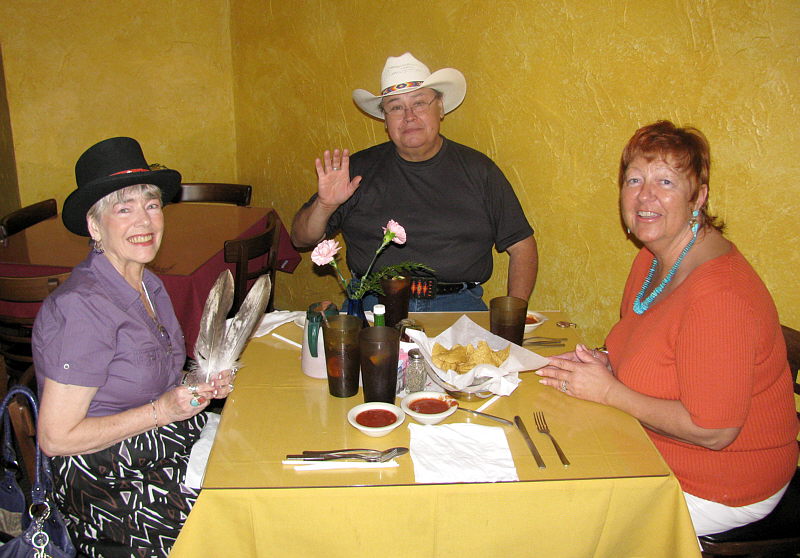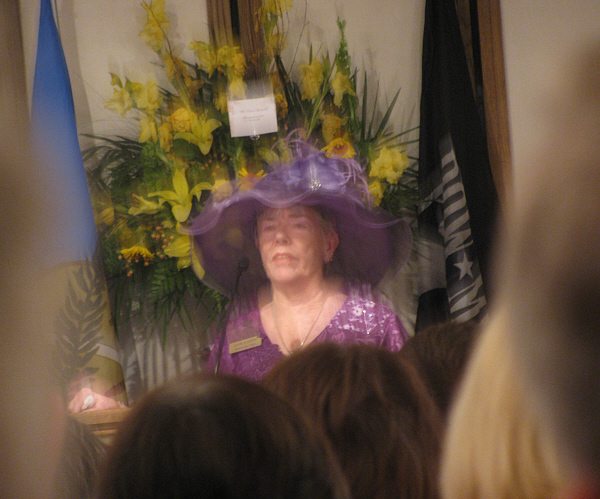Doug Kerr
Well-known member
A couple of weeks ago Carla received the sad news of the death of our friend, the American Indian stone sculptor Gordon Tonips. Gordon died at the age of 61 of cancer of the pancreas, diagnosed only recently (and way too late).
Gordon was Comanche and Kiowa.
Carla had originally become aware of Gordon's work through a feature article in a regional glossy magazine, Cowboys and Indians. She contacted Gordon's wife and business partner, Tomazane (Tommye) and asked if Gordon's work would be exhibited in any shows in the area in the near future. In fact, they were going to be at the Indian Market in Grand Prairie, Texas (between Dallas and Fort Worth, about 40 miles from our place). Tommye said that ordinarily at that show they only displayed their minor works, notably a lovely line of stone oil lamps, but given that a major Cherokee art patron was going to visit, they would have some serious pieces there!
In fact, there was very serious work there, and we bought our first of his pieces, Puye. We see it here:
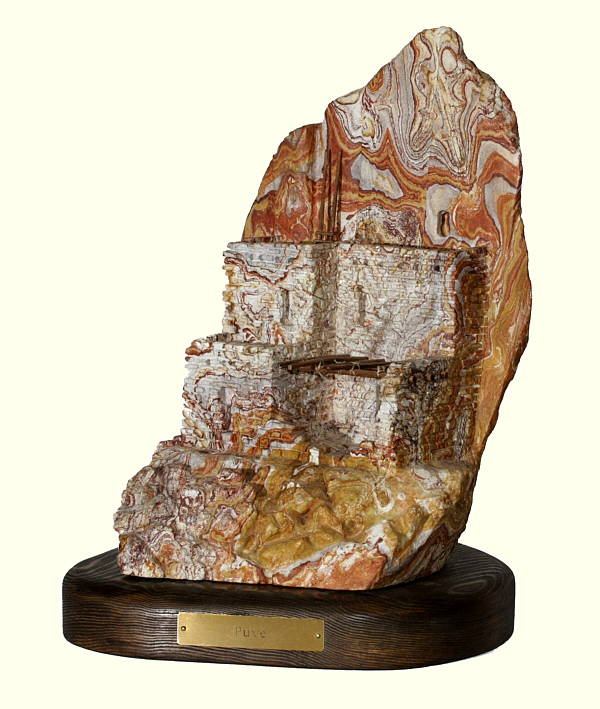
Douglas A. Kerr: Gordon Tonips: Puye
The sculpture depicts a stone dwelling, carved into the face of the rock, in the Puye ruins of New Mexico, an abandoned pueblo near Espanola, New Mexico (about 35 miles northwest of Santa Fe). The site was believed to have been occupied from about the 12th century until 1577, when the inhabitants had to leave owing to severe drought. It is thought that the present-day inhabitants of the Santa Clara Pueblo (nearby) are descended from the Puye people.
The detail work in this piece is just stunning.
The piece is about 12" high (exclusive of its display base).
Gordon finds the boulders he uses on his travels around the region, and says that after a while, a boulder will speak to him, and tell him what it is destined to be. He says he then cuts away everything but that.
Later, as a surprise gift to me, Carla purchased a second of Gordon's works, Baking Day:
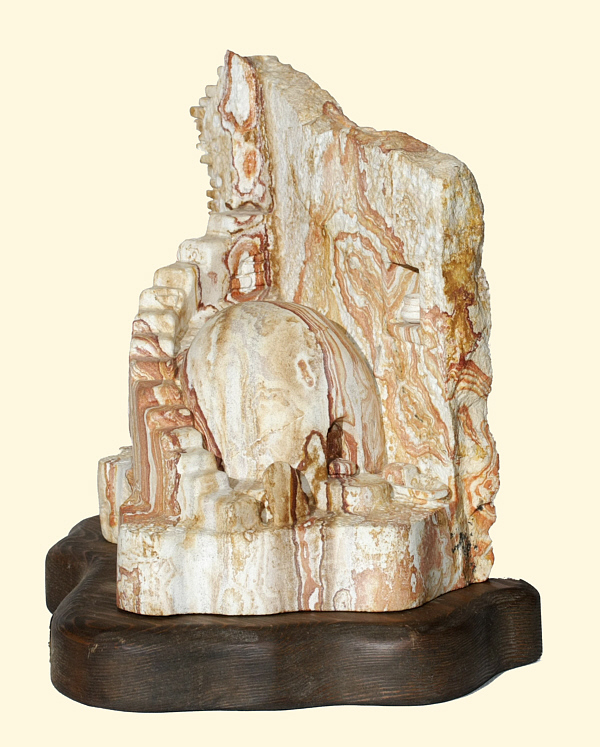
Douglas A. Kerr: Gordon Tonips: Baking Day
It depicts a classical American Indian corner baking oven. Fireplaces based on this design are a regular fixture in the modern adobe-style homes of New Mexico.
The piece is about 11" high.
At Gordon's show at the Fort Worth Stock Show and Rodeo, we saw a truly extraordinary work, with the deceptively simple title The Water Jar. It had just taken second prize in the stone sculpture division of the prestigious art competition at the Red Earth Native American Cultural Festival in Oklahoma City, Oklahoma.
Carla shortly decided that we had to have this piece, and negotiated with Tommye for its purchase when it came off exhibition. We see it here:
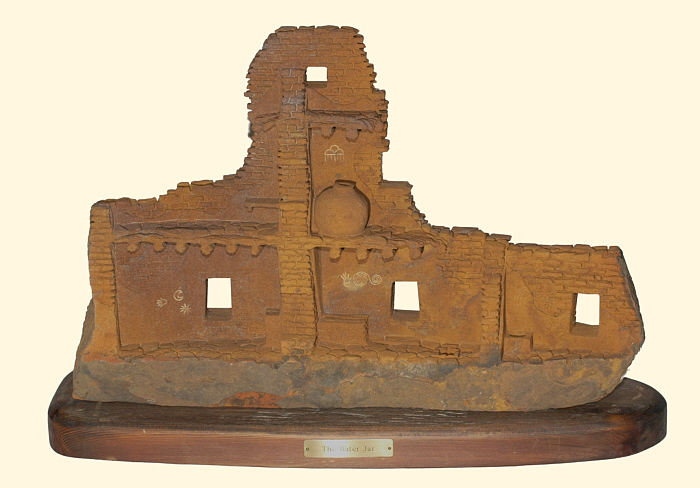
Douglas A. Kerr: Gordon Tonips: The Water Jar
The piece is approximately 23" wide and 15" high.
As always, the detail work is just exquisite. In this case, the back of the piece is fully worked.
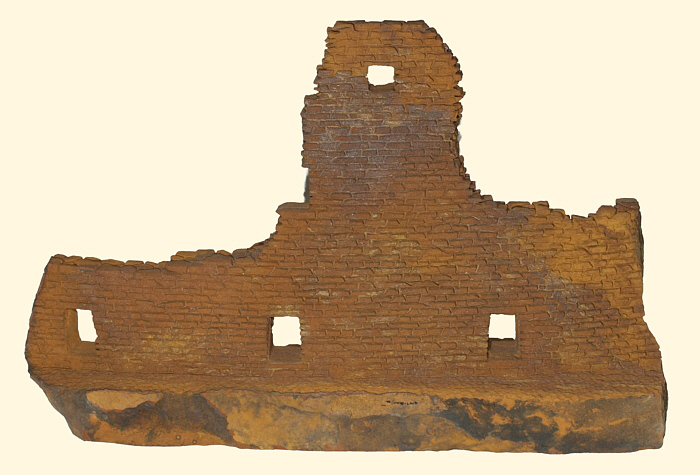
Douglas A. Kerr: Gordon Tonips: The Water Jar - rear face
[continued]
Gordon was Comanche and Kiowa.
Carla had originally become aware of Gordon's work through a feature article in a regional glossy magazine, Cowboys and Indians. She contacted Gordon's wife and business partner, Tomazane (Tommye) and asked if Gordon's work would be exhibited in any shows in the area in the near future. In fact, they were going to be at the Indian Market in Grand Prairie, Texas (between Dallas and Fort Worth, about 40 miles from our place). Tommye said that ordinarily at that show they only displayed their minor works, notably a lovely line of stone oil lamps, but given that a major Cherokee art patron was going to visit, they would have some serious pieces there!
In fact, there was very serious work there, and we bought our first of his pieces, Puye. We see it here:

Douglas A. Kerr: Gordon Tonips: Puye
The sculpture depicts a stone dwelling, carved into the face of the rock, in the Puye ruins of New Mexico, an abandoned pueblo near Espanola, New Mexico (about 35 miles northwest of Santa Fe). The site was believed to have been occupied from about the 12th century until 1577, when the inhabitants had to leave owing to severe drought. It is thought that the present-day inhabitants of the Santa Clara Pueblo (nearby) are descended from the Puye people.
The detail work in this piece is just stunning.
The piece is about 12" high (exclusive of its display base).
Gordon finds the boulders he uses on his travels around the region, and says that after a while, a boulder will speak to him, and tell him what it is destined to be. He says he then cuts away everything but that.
Later, as a surprise gift to me, Carla purchased a second of Gordon's works, Baking Day:

Douglas A. Kerr: Gordon Tonips: Baking Day
It depicts a classical American Indian corner baking oven. Fireplaces based on this design are a regular fixture in the modern adobe-style homes of New Mexico.
The piece is about 11" high.
At Gordon's show at the Fort Worth Stock Show and Rodeo, we saw a truly extraordinary work, with the deceptively simple title The Water Jar. It had just taken second prize in the stone sculpture division of the prestigious art competition at the Red Earth Native American Cultural Festival in Oklahoma City, Oklahoma.
Carla shortly decided that we had to have this piece, and negotiated with Tommye for its purchase when it came off exhibition. We see it here:

Douglas A. Kerr: Gordon Tonips: The Water Jar
The piece is approximately 23" wide and 15" high.
As always, the detail work is just exquisite. In this case, the back of the piece is fully worked.

Douglas A. Kerr: Gordon Tonips: The Water Jar - rear face
[continued]

